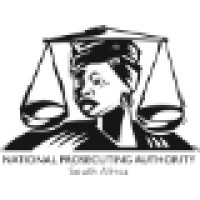Company Cyber Security Posture
NANA
NA Company Details
NA
NA
NA
NA
NA
NA
Scan still pending
NA
NA
Between 200 and 800
This score is AI-generated and less favored by cyber insurers, who prefer the TPRM score.
 NA Global Score
NA Global Score.png)

Company Scoring based on AI Models
| Model Name | Date | Description | Current Score Difference | Score |
|---|---|---|---|---|
| AVERAGE-Industry | 03-12-2025 | This score represents the average cybersecurity rating of companies already scanned within the same industry. It provides a benchmark to compare an individual company's security posture against its industry peers. | N/A | Between 200 and 800 |
Company Cyber Security News & History
| Entity | Type | Severity | Impact | Seen | Url ID | Details | View |
|---|
Company Subsidiaries

NA
Access Data Using Our API

Get company history
.png)
NA Cyber Security News
TAG-140 Deploys DRAT V2 RAT, Targeting Indian Government, Defense, and Rail Sectors
TAG-140 targets Indian government sectors with DRAT V2, evolving malware and tactics for greater persistence.
What’s Behind 16 Billion Passwords Leak? Indian Government Issues Digital Security Advisory For Social Media Users
The leaked data reportedly contains usernames and passwords from tech giants including Apple, Google, Facebook, Telegram, GitHub, and various ...
Shifting Gears: India's Government Calls for Financial Cybersecurity Change
India's BFSI sector faces rising AI-driven cyber threats. Learn key risks, new policies & best practices to secure financial stability.
Data Security Council of India, HIMSS to report on India's healthcare cybersecurity
Data Security Council of India, HIMSS to report on India's healthcare cybersecurity. The partnership will also focus on workforce development.
16 billion passwords leaked: Indian government issues alert, shares safety tips for Apple, Google, and...
CERT-In has issued a warning after 16 billion credentials were leaked online, urging users to update passwords, enable MFA, and avoid phishing ...
Cybersecurity considerations 2025: Government and public sector
We work with government and public sector cyber leaders in developing digital solutions, advising on the implementation and monitoring of risks.
India Readies Overhauled National Data Privacy Rules
A year and a half ago, India enacted its first ever comprehensive national data protection law: the Digital Personal Data Protection (DPDP) Act.
India’s new cyber rules for telecoms come with big privacy risks, experts say
India's new cyber rules for telecoms come with big privacy risks, experts say · Impact on user privacy. The obligation to provide user data to ...
US government extends critical cybersecurity funding after deadline warning
The US government has extended funding for the CVE program, ensuring its continued operation after warnings of potential disruption. This action ...

NA Similar Companies

Politi
MANGE FAGLIGHEDER SAMMEN I politiet arbejder mere end 16.000 medarbejdere sammen om at forebygge og forhindre kriminalitet, så Danmark er et trygt og sikkert sted at bo og leve. Vi er alle dybt engagerede og motiverede for at gøre en forskel for andre mennesker og for samfundet som helhed. Langt

Arma dei Carabinieri
The Carabinieri Corps is an armed Force permanently enforcing public security. It fully contributes to the "external defense" and "internal security" systems of Italy. As an armed force, it participates in international peacekeeping and security missions and carries out military police functions wi

POLICIA NACIONAL DE COLOMBIA
La Policía Nacional es un cuerpo permanente de naturaleza civil, a cargo de la nación, cuyo fin primordial es el mantenimiento de las condiciones necesarias para el ejercicio de los derechos y libertades públicas, y para asegurar que los habitantes de Colombia convivan en paz.

Politie Nederland
Politiemensen staan midden in de maatschappij, dicht op het nieuws. De politie is daar waar het gebeurt. Het optreden van agenten ligt altijd onder een vergrootglas. Bij de politie ben je 24 uur per dag en voor iedereen in onze diverse samenleving. Integer, moedig, betrouwbaar en verbindend zijn daa

Kosovo Police
Historiku i PK-së Më 6 shtator të vitit 1999, Misioni i OSBE-së në Kosovë, në pajtim me Rezolutën e Kombeve të Bashkuara 1244, ka hapur Shkollën e policisë dhe ka filluar trajnimin e kandidatëve për pjesëtarë të Policisë së Kosovës. Gjenerata e parë e kandidatëve për pjesëtarë të këtij Shërbimi fil

National Prosecuting Authority
Introduction to the National Prosecuting Authority Section 179 of the Constitution of the Republic of South Africa, 1996 (Act No. 108 of 1996), created a single National Prosecution Authority (NPA). The Office of the National Director of Public Prosecutions was established on 1 August 1998, in t

Frequently Asked Questions
Explore insights on cybersecurity incidents, risk posture, and Rankiteo's assessments.
NA CyberSecurity History Information
How many cyber incidents has NA faced?
Total Incidents: According to Rankiteo, NA has faced 0 incidents in the past.
What types of cybersecurity incidents have occurred at NA?
Incident Types: The types of cybersecurity incidents that have occurred include .
Additional Questions
What Do We Measure?
















Every week, Rankiteo analyzes billions of signals to give organizations a sharper, faster view of emerging risks. With deeper, more actionable intelligence at their fingertips, security teams can outpace threat actors, respond instantly to Zero-Day attacks, and dramatically shrink their risk exposure window.
These are some of the factors we use to calculate the overall score:
Identify exposed access points, detect misconfigured SSL certificates, and uncover vulnerabilities across the network infrastructure.
Gain visibility into the software components used within an organization to detect vulnerabilities, manage risk, and ensure supply chain security.
Monitor and manage all IT assets and their configurations to ensure accurate, real-time visibility across the company's technology environment.
Leverage real-time insights on active threats, malware campaigns, and emerging vulnerabilities to proactively defend against evolving cyberattacks.




